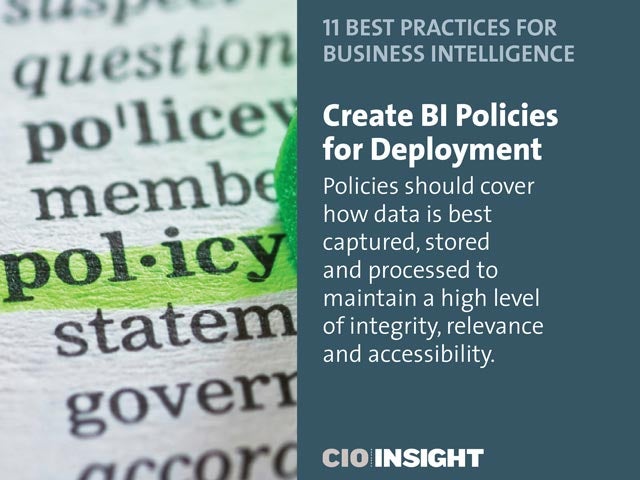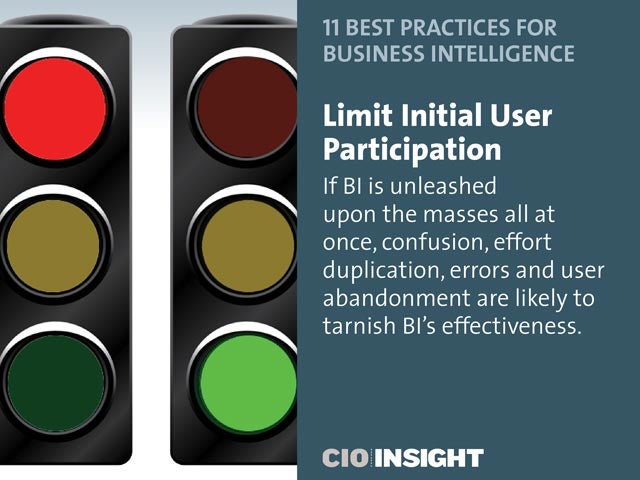
11 Best Practices for Business Intelligence
 11 Best Practices for Business Intelligence
11 Best Practices for Business Intelligence
Business intelligence best practices are a must, and these 11 tips are sure to put your organization on the right path to using data strategically and smartly.
 Bigger Isn’t Always Better
Bigger Isn’t Always Better
Solutions must do more than gather and process tons of data: trustworthiness and immediacy are key.
 Deliverable Value Over TCO
Deliverable Value Over TCO
If your BI implementation strategy will deliver on specific ROI objectives, you’ll gain greater buy-in regardless of the initial TCO (total cost of ownership).
 Take Stock of Current Resources
Take Stock of Current Resources
Look within the organization to leverage the IT you already own to support BI—your CFO and other purchase decision-makers are more likely to support additional investments.
 File-Formatting Resources
File-Formatting Resources
BI draws from more than 300 file formats, such as HTML, Word, Excel, PDF, images and multimedia, to make use of unstructured data. Be sure you’re ready for these various sources.
 Create BI Policies for Deployment
Create BI Policies for Deployment
Policies should cover how data is best captured, stored and processed to maintain a high level of integrity, relevance and accessibility.
 Go Team: Involve Business Leaders From the Outset
Go Team: Involve Business Leaders From the Outset
BI is all about supporting business needs, so you’ll need constant input from these leaders to keep IT on the right track.
 The Only Constant? Change
The Only Constant? Change
Disruptive market changes and evolving business requirements will test the agility of your BI deployment.
 Limit Initial User Participation
Limit Initial User Participation
If BI is unleashed upon the masses all at once, confusion, effort duplication, errors and user abandonment are likely to tarnish BI’s effectiveness.
 Define the Project’s Scope
Define the Project’s Scope
Implementing a BI undertaking in stages is essential, but you should understand ultimately how many users and functions will need to be supported over time.
 Training Day
Training Day
To give the BI project the greatest chance of success, appoint IT members as your BI gurus and proactively enlist them to train employees.
 Support Self Service
Support Self Service
The ultimate goal of BI is to hand off the project to the appropriate business unit. To accomplish this, proceed with solution acquisitions and training plans with this objective in the forefront of all decisions.